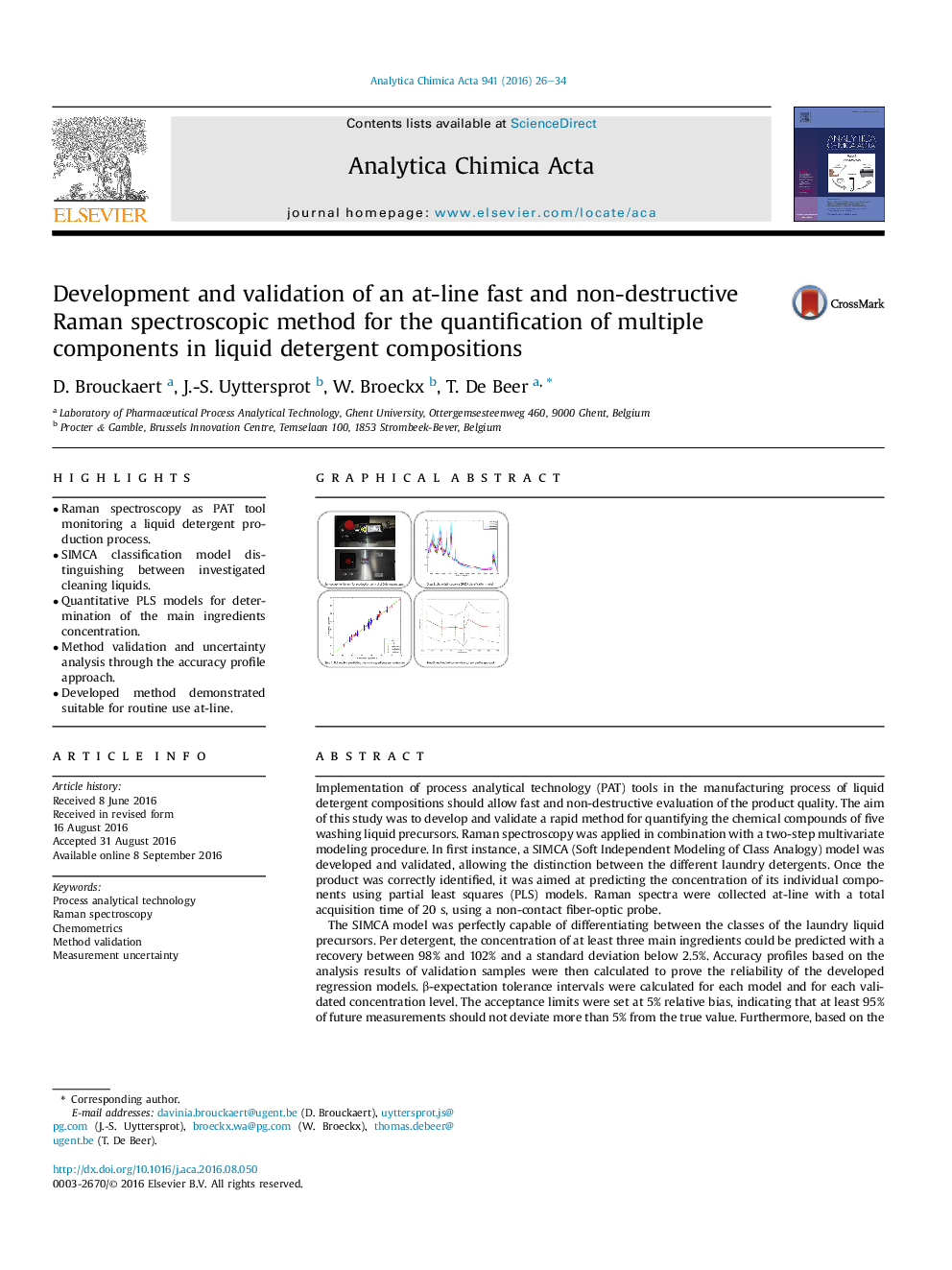| کد مقاله | کد نشریه | سال انتشار | مقاله انگلیسی | نسخه تمام متن |
|---|---|---|---|---|
| 5131315 | 1490891 | 2016 | 9 صفحه PDF | دانلود رایگان |
- Raman spectroscopy as PAT tool monitoring a liquid detergent production process.
- SIMCA classification model distinguishing between investigated cleaning liquids.
- Quantitative PLS models for determination of the main ingredients concentration.
- Method validation and uncertainty analysis through the accuracy profile approach.
- Developed method demonstrated suitable for routine use at-line.
Implementation of process analytical technology (PAT) tools in the manufacturing process of liquid detergent compositions should allow fast and non-destructive evaluation of the product quality. The aim of this study was to develop and validate a rapid method for quantifying the chemical compounds of five washing liquid precursors. Raman spectroscopy was applied in combination with a two-step multivariate modeling procedure. In first instance, a SIMCA (Soft Independent Modeling of Class Analogy) model was developed and validated, allowing the distinction between the different laundry detergents. Once the product was correctly identified, it was aimed at predicting the concentration of its individual components using partial least squares (PLS) models. Raman spectra were collected at-line with a total acquisition time of 20 s, using a non-contact fiber-optic probe.The SIMCA model was perfectly capable of differentiating between the classes of the laundry liquid precursors. Per detergent, the concentration of at least three main ingredients could be predicted with a recovery between 98% and 102% and a standard deviation below 2.5%. Accuracy profiles based on the analysis results of validation samples were then calculated to prove the reliability of the developed regression models. β-expectation tolerance intervals were calculated for each model and for each validated concentration level. The acceptance limits were set at 5% relative bias, indicating that at least 95% of future measurements should not deviate more than 5% from the true value. Furthermore, based on the data of the accuracy profiles, the measurement uncertainty was determined. The developed Raman spectroscopic method demonstrated to be able to rapidly and adequately determine the concentration of the components of interest in the liquid detergent compositions at-line.
185
Journal: Analytica Chimica Acta - Volume 941, 19 October 2016, Pages 26-34
